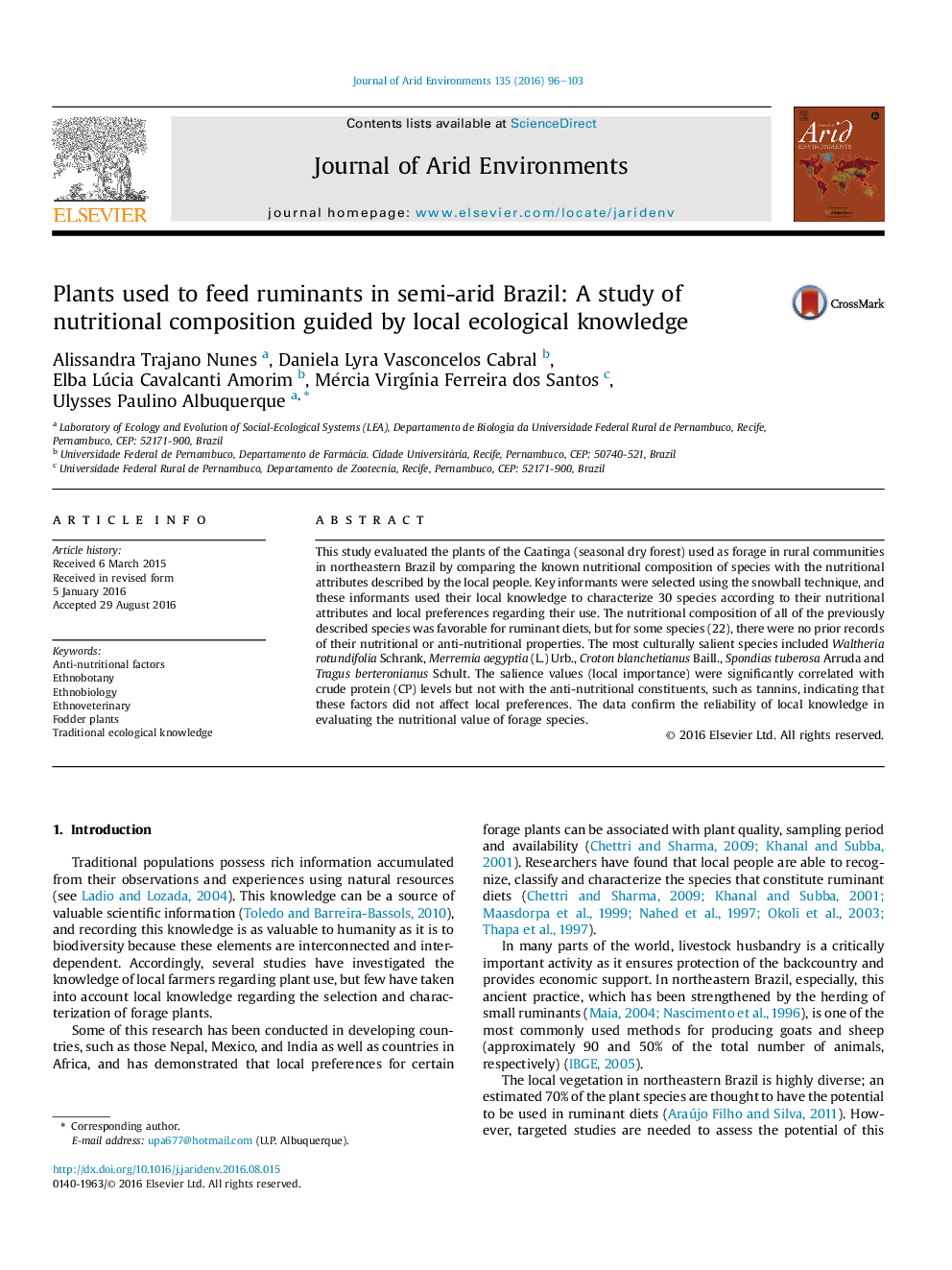| Article ID | Journal | Published Year | Pages | File Type |
|---|---|---|---|---|
| 4392676 | Journal of Arid Environments | 2016 | 8 Pages |
•Local experts can distinguish fodder species based on their nutritional attributes.•The potential of all of the analyzed species for use in animal diets was high.•We found a strong correlation between the attributes described by local people and the chemical constituents of the species.
This study evaluated the plants of the Caatinga (seasonal dry forest) used as forage in rural communities in northeastern Brazil by comparing the known nutritional composition of species with the nutritional attributes described by the local people. Key informants were selected using the snowball technique, and these informants used their local knowledge to characterize 30 species according to their nutritional attributes and local preferences regarding their use. The nutritional composition of all of the previously described species was favorable for ruminant diets, but for some species (22), there were no prior records of their nutritional or anti-nutritional properties. The most culturally salient species included Waltheria rotundifolia Schrank, Merremia aegyptia (L.) Urb., Croton blanchetianus Baill., Spondias tuberosa Arruda and Tragus berteronianus Schult. The salience values (local importance) were significantly correlated with crude protein (CP) levels but not with the anti-nutritional constituents, such as tannins, indicating that these factors did not affect local preferences. The data confirm the reliability of local knowledge in evaluating the nutritional value of forage species.
